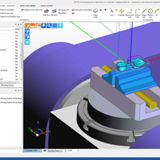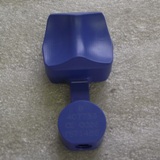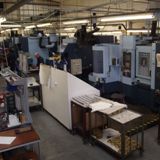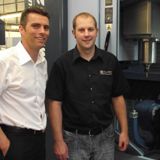Just What Doctor Ordered For Medical Specialist’s Complex Parts
A medical subcontractor uses EDGECAM software to focus on its forte of machining difficult, complex parts.
Around 30 per cent of Claro Precision Engineering Ltd’s work is 5-axis, carried out on four of their 19 CNC machining centres at 14,000 square foot premises in North Yorkshire. A current contract calls for them to machine an ankle trial bearing from medical grade plastic, requiring detailed contours. Other products include instruments made from 17-4 ph stainless steel, used by surgeons carrying out hip replacements, to remove bone ahead of the implant going in.“We’re taking on ever-more challenging jobs, but they rarely pose a problem to our engineering team. I look at these medical components and wonder how on Earth would we make these without EDGECAM?”
Mike Lewis, Sales Director.
They also manufacture a sleeve in Ertacetal H for a pig’s heart valve which is implanted into heart patients, giving a live tissue solution rather than using a mechanical valve. Claro Sales Director Mike Lewis says the sleeve has to be absolute high precision and burr-free as it stays inside the patient for the rest of their life.
Holding the ISO 13485 Medical accreditation, Claro is a second tier manufacturer, producing around 150 different types of medical components totalling thousands of individual parts a year. It includes a number of full assemblies comprising a series of items. “We’ll assemble and laser mark, then bag and label them, so our customer simply supplies the hospital with what we’ve produced, complete.”
EDGECAM CNC software is a vital ingredient in Claro’s prescription for providing a fast, reliable and versatile service. “We’re taking on ever-more challenging jobs, but they rarely pose a problem to our engineering team. I look at these medical components and wonder how on Earth would we make these without EDGECAM?”
He says EDGECAM helps achieve their success at the “trickier” end of machining because of its outstanding 5-axis capabilities, and the fact that a program can easily be edited not only for a different machine but for a different cutting technology...a point echoed by CAD/CAM Engineer Dominic Watson.
Their shopfloor comprises a number of 3-, 4- and 5-axis, and horizontal, machining centres from three manufacturers – Matsuura, Doosan and Hardinge Bridgeport. Sometimes an order that’s been programmed for the Matsuura MX 520 5-axis may need moving due to work rescheduling, so reposting it quickly and reliably to any other machine is vital. As is the ability to transform the program from one technology to another. He says that having created a 5-axis program for one-hit machining, they have occasionally needed to take it back to the pallet method, with a series of operations, when there were only certain machines free.
“Essentially they’re two different technologies, but I simply edited what I’d created in EDGECAM as a 5-axis program, and prepared it for another machine without having to reprogram it.
“We’ve also gone from a 3-axis, and even a horizontal program, to 5-axis. Being able to edit in this way has saved us hours of work when we’ve needed to switch machines.”
He says that before they installed EDGECAM nearly three years ago, cutting involved a number of separate operations and considerable work at the machines. “Now we can have multiple components programmed complete on the tombstone.”
While they also get involved in designing products for some customers, most of their work comes in as an existing 3D model. “We open it in EDGECAM, then use the new Workflow interface which automates many aspects of the setting up process, including vices and stock...and the tool store for the machining side.
“All our tools are set offline, so basically when a job gets to the machine it is ready to run. Special tooling, materials, paper work, programs and set up sheets are at the machine, ready to prove out the program that EDGECAM’s produced.”
The software’s collision detection capability is another important aspect for their horizontal and 4- and 5-axis machines. “It gives us complete confidence that the program will run reliably and accurately when we start cutting metal and plastic.”
He concludes by saying that EDGECAM is absolutely key to their manufacturing process. “There’s no need to create several programs and stitch them together any more. We can program parts complete, with no errors, right across the range from 3- to 5- axis, and our horizontal Matsuura H300. We still do some 3-axis milling, but it’s mostly 5-axis with one datum and EDGECAM taking care of the programming.”
About the Company
Name: Claro Precision Engineering Ltd
Web: www.claro.co.uk
Benefits Achieved
- Enables complex, difficult parts to be easily machined.
- Ability to transform the program from one technology to another – i.e. 3-axis to 5-axis, and 5-axis to 3-axis.
- Complete confidence that the program will run reliably and accurately when they start cutting metal and plastic.
Comments
“We’re taking on ever-more challenging jobs, but they rarely pose a problem to our engineering team. I look at these medical components and wonder how on Earth would we make these without EDGECAM?”
Mike Lewis, Sales Director
















